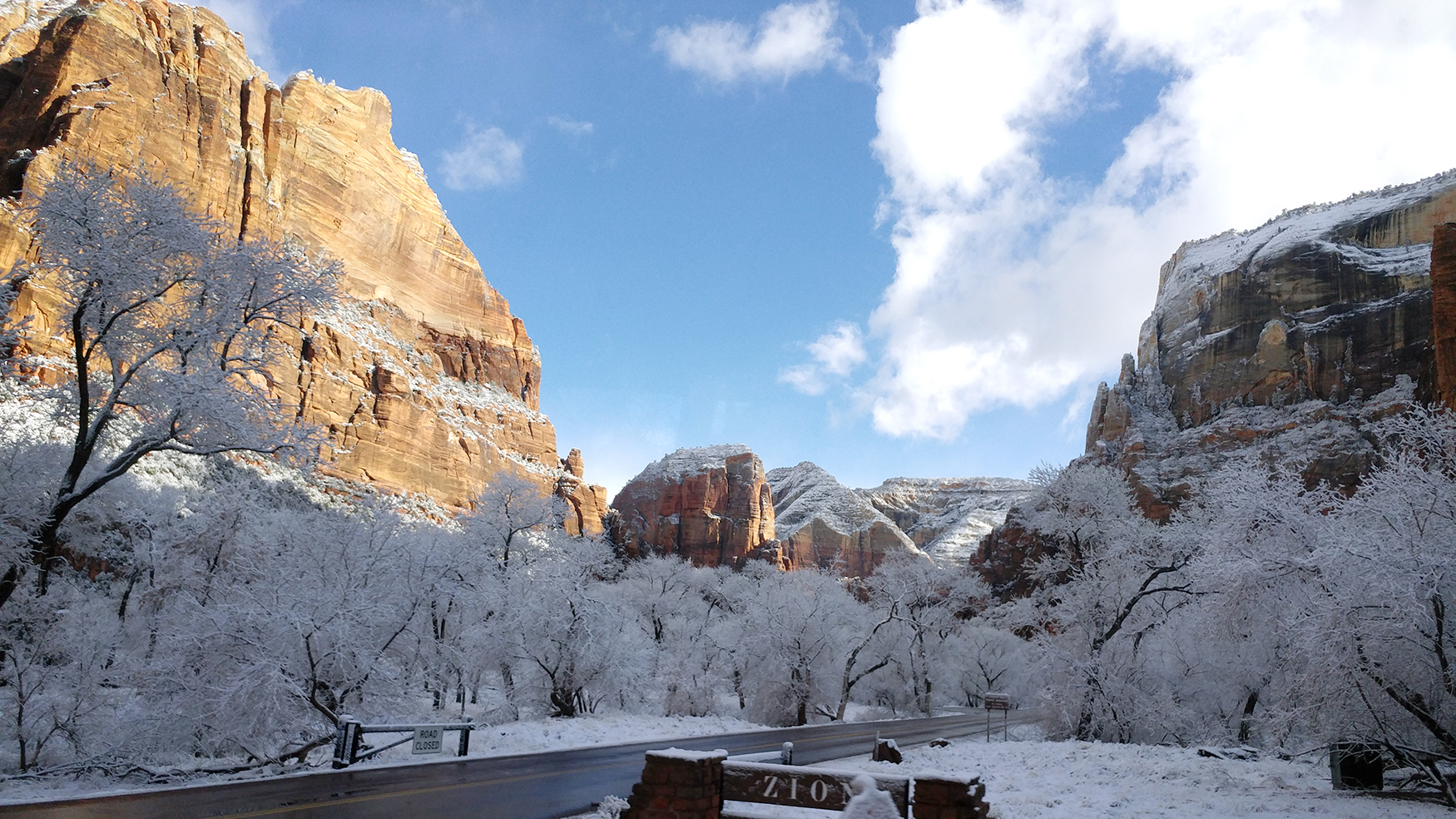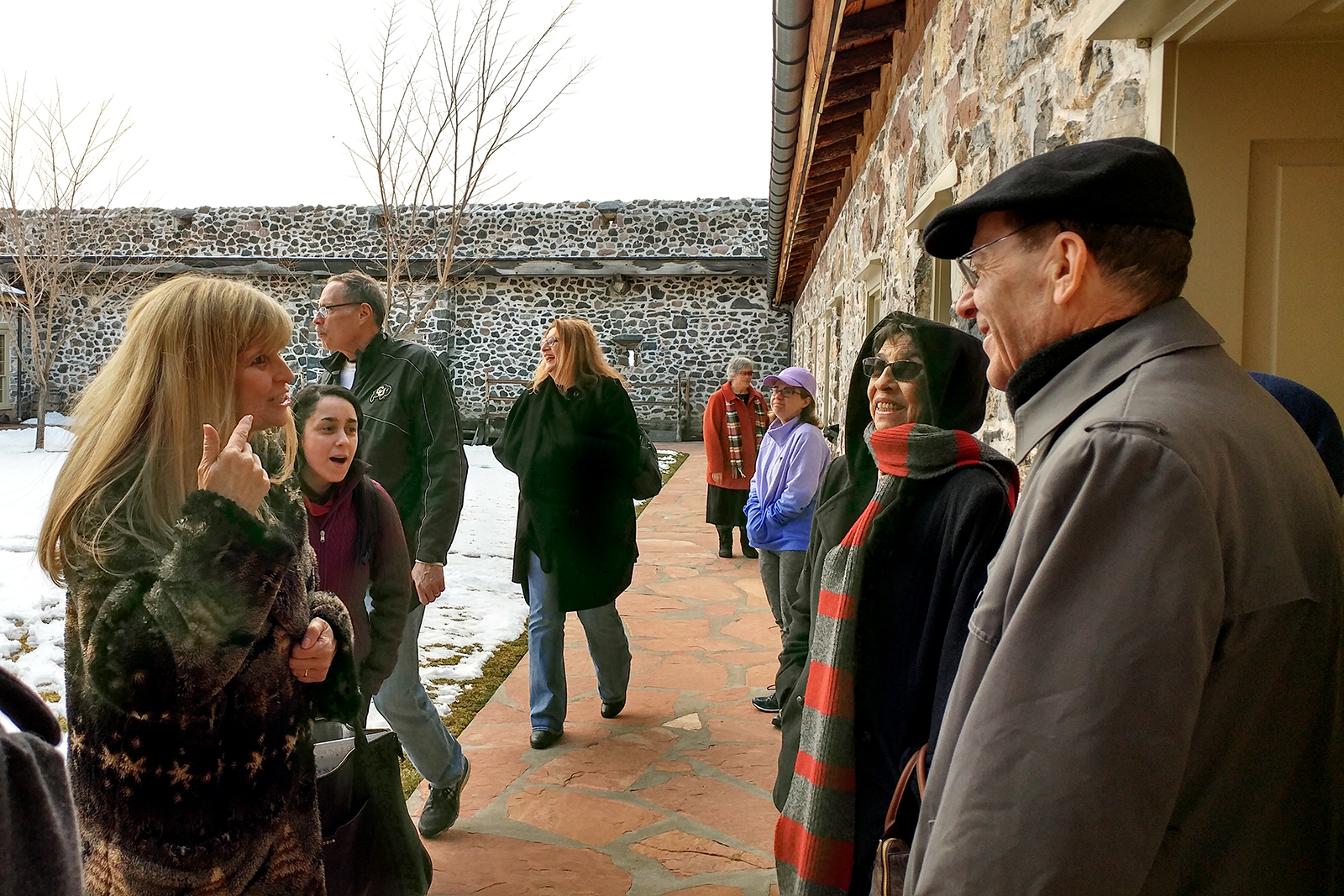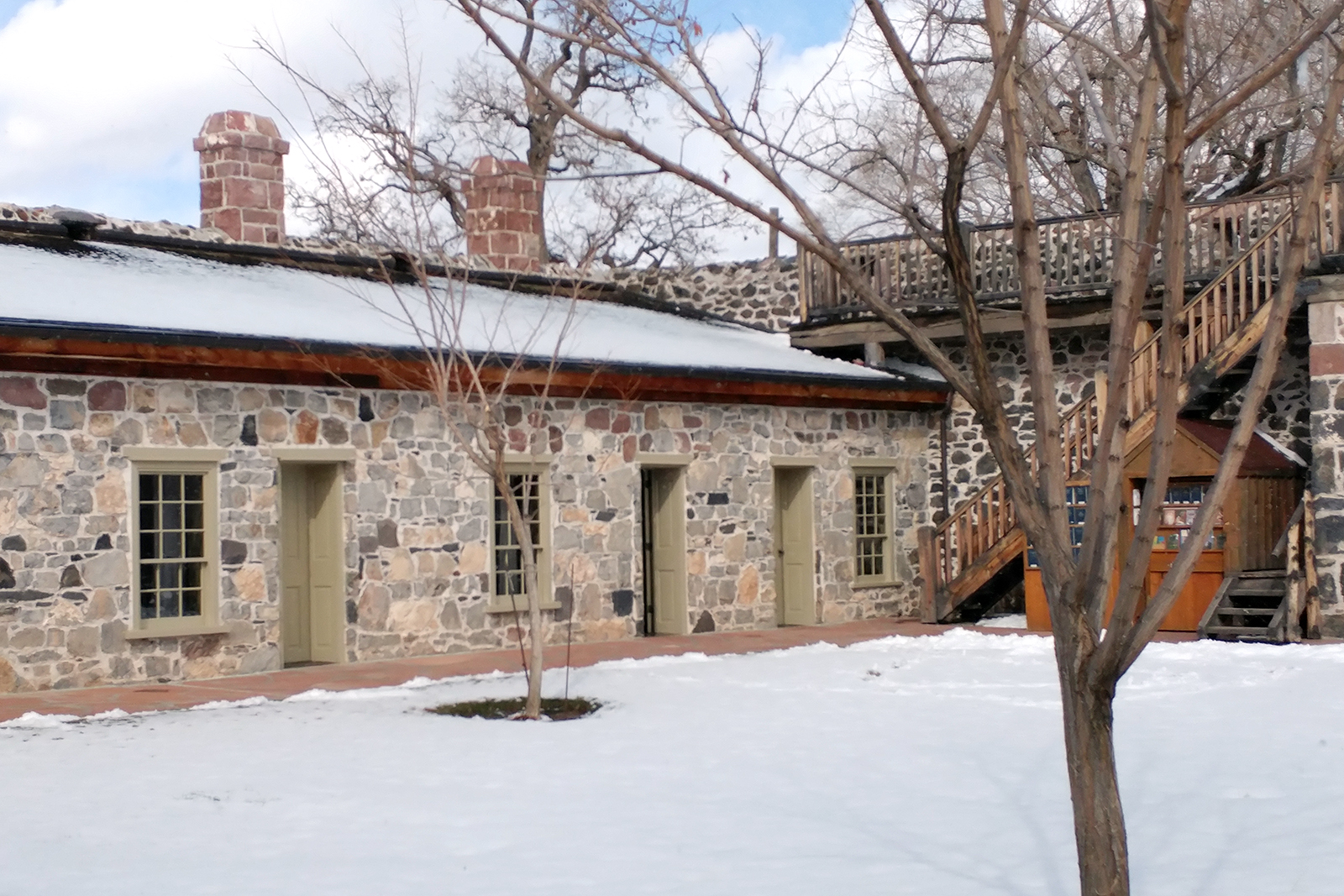SALT LAKE CITY — It was a morning of beauty, wonder and majesty reflected in God’s creation as the 45 pilgrims on the Friends of the Cathedral Pilgrimage traveled to Zion National Park in southwest Utah.
After breakfast and 7:30 a.m. Mass at St. George Parish, we headed out on our tour bus along Interstate 15 toward Springdale and the park; one of five National Parks in an area of the state that includes deep canyons, steep rock faces, multicolored layers of terrain, pine trees and the famed arches — formations of rock carved out by centuries of erosion.
Local residents greet the dawn in prayer at St. George Catholic Church pic.twitter.com/gbYcsEdWn0
— Jeff Grant (@JeffGrant835) March 18, 2018
An extraordinary display of God’s creation
Zion features a canyon whose walls include massive solid rock faces, rising hundreds of feet above a tree-filled canyon floor with a small river running through its middle. On this morning, a light overnight snow had left a blanket of white on the canyon floor and covered portions of the steep rock walls. The bare tree branches were adorned in white, making them appear crystal-like under the spreading sunlight.
But the story behind the scene was perhaps even better than the winter panorama itself.
“We only get snow here twice, maybe three times a year,” explained Mike, a driver of one of the buses that shuttles visitors throughout the park. “We usually don’t get more than 1-2 inches at a time. This is really the desert, so this is uncommon.”
When there is snow, at this time of year, it doesn’t stick around long. By the time our two-hour visit was over, much already had fallen off the trees. But God’s providence allowed us to witness this majestic scene.
The pilgrims encounter wildife. #UtahPilgrimmage pic.twitter.com/ugh4Sh1ywu
— Jeff Grant (@JeffGrant835) March 18, 2018
“Oh, it was beautiful. It was all God-directed,” Bishop Olmsted reminded me during our lunch stop afterward. “It was magnificent.”
Indeed, it was.
“There are no words to explain it,” reflected Magda Nuñez from St. Helen Parish in Glendale.

“Trying to explain it to my family doesn’t do it justice. They have to come and see it,” echoed Ana Sara, a parishioner of Blessed Sacrament in Tolleson.
Our midday prayers aboard the bus reflected what we had witnessed.
“Bless the Lord, all you works of the Lord; Praise and exalt Him above all forever,” recited Fr. John Lankeit, rector of Ss. Simon and Jude Cathedral, as he led us in “The Canticle of Daniel,” an expression of love for God and His Creation.
The beauty of Zion later gave way to a story of service and hospitality as we stepped back to the late 1800s at our post-lunch stop: Cove Fort.

A trip back in time
This historic site, situated halfway between St. George and Salt Lake City, was once a refuge of protection and lodging for pioneers and telegraph workers in the late 1800s.
Founded in 1867 at the direction of Brigham Young, then president of the Church of Jesus Christ of Latter-day Saints, the fort was established to safeguard travelers from Indians and serve as a stagecoach stop, according to our LDS tour guide. With its stone walls, 4 feet thick at their base and 18 feet high, the fort offered 12 interior rooms used to house overnight visitors, as well as cook, wash clothes, sew and bathe. There also was a telegraph room, a barn with stables and a blacksmith.
A 45-minute tour gave us a window into the lives of the fort’s builder, Ira Hinckley and his family, who maintained a large vegetable garden and cows. They also made their own soap by pouring hot water over wood ashes to make the alkali potash. They then boiled the potash with animal fats in iron kettles to make soap.
Ps 19:1 southern Utah pic.twitter.com/OHIuRpSWSz
— Jeff Grant (@JeffGrant835) March 18, 2018
“They were hardworking, resourceful people,” our guide explained, adding the fort often hosted over 50 people on a given night, keeping family members busy preparing and serving meals and tending to guests’ other needs.
“Impressive,” Nuñez told me. I wondered aloud to the four others in my tour section what the fort’s occupants would think of today’s modern conveniences. “They wouldn’t believe it,” she replied.
The fort remained in operation as a busy hub for about 20 years. With the arrival of the railroad in 1869, its need diminished, and it was finally closed in 1894 by Latter-day Saint leaders.
“The end of an era,” our tour-video presentation stated.

The fort was eventually purchased by the Hinckley family, and in 1996, then LDS president Gordon B. Hinckley — a direct descendant of Ira’s — dedicated the restored structure.
A day of uncommon natural beauty bookended with a glimpse into the lives of servants to settlers of the Old West. We witnessed God in His creation and in the lives of ordinary humans; a wonderful experience for pilgrims seeking to deepen their experience with Our Lord.
I felt thankful and privileged to be a part of the day’s events, and as we neared Salt Lake City, I looked forward to the sights and stories the coming day would bring.







